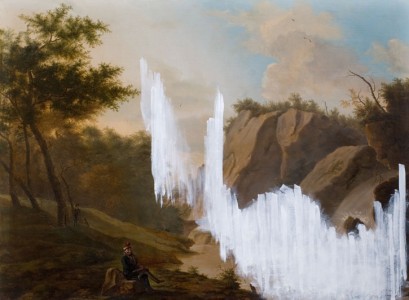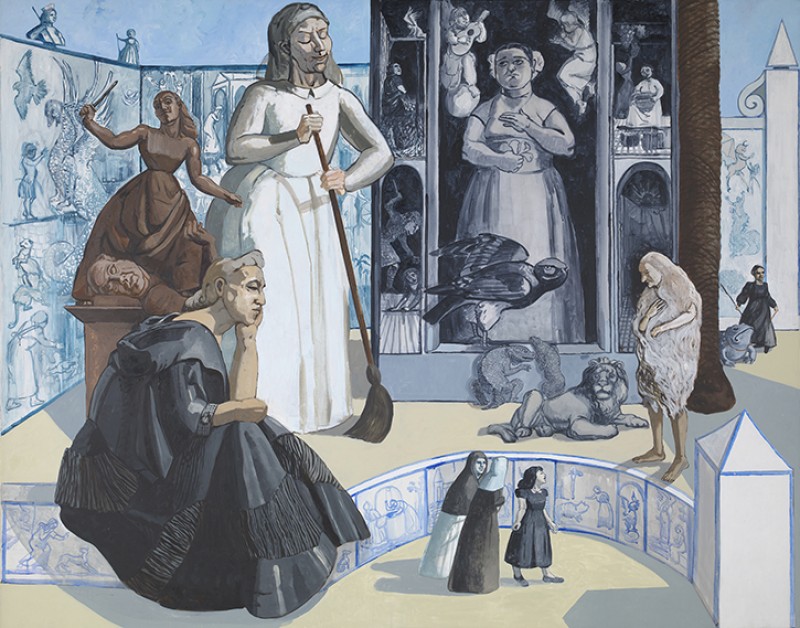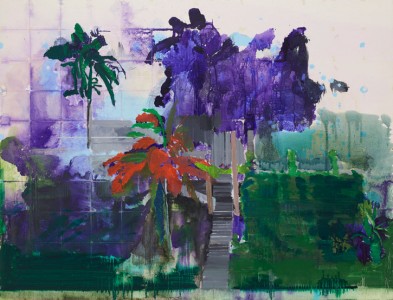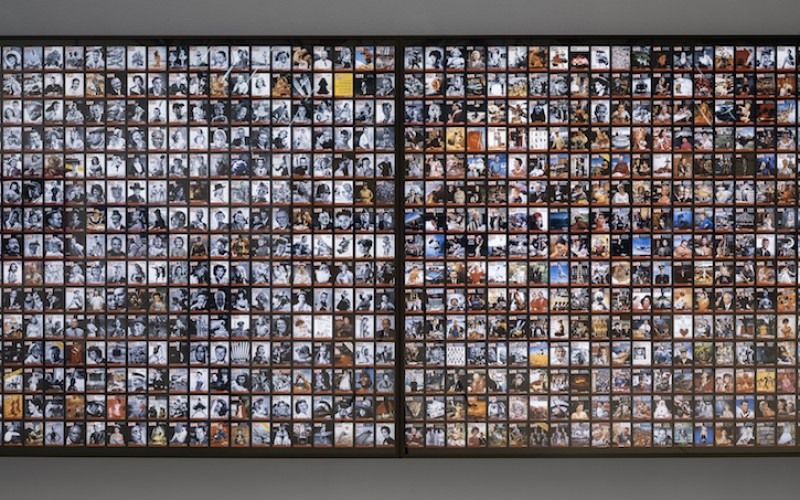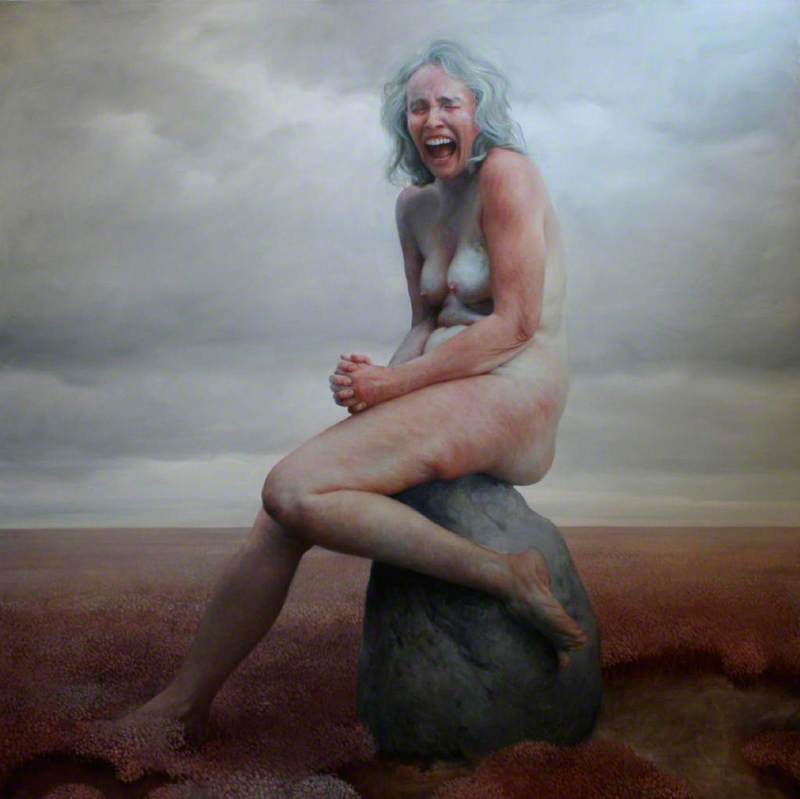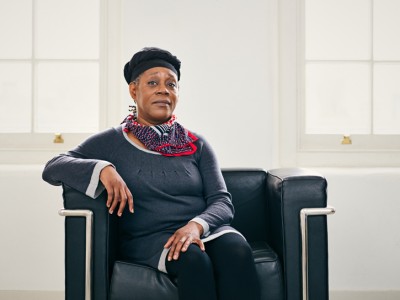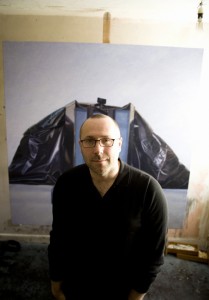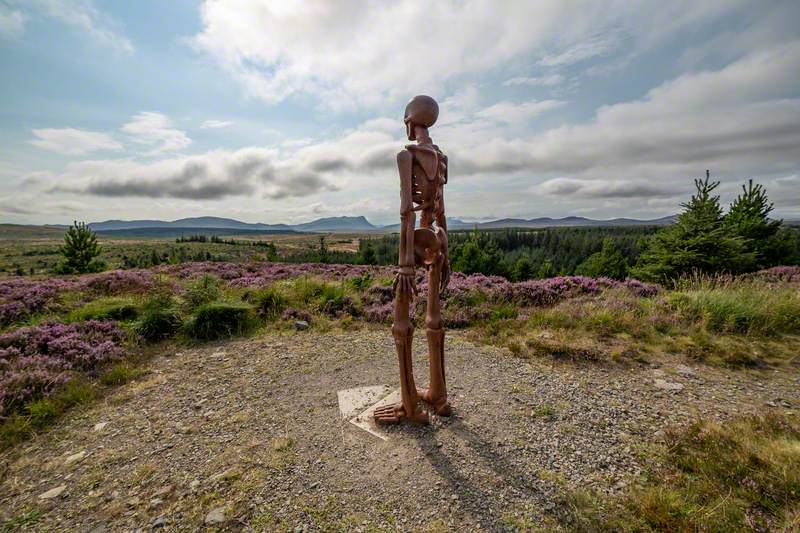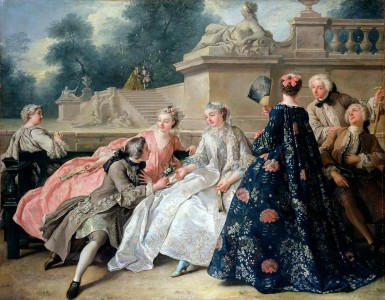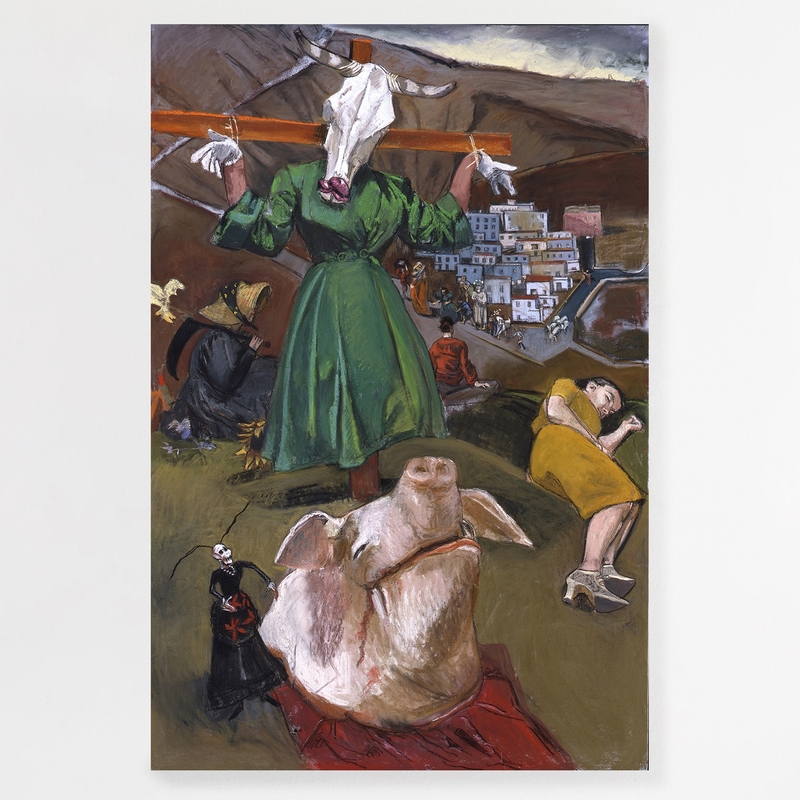The Ashmolean Museum's historical collections are the inspiration for two artists whose new works will be on display at the Museum from 8th July, as part of a new series of contemporary art exhibitions titled 'Ashmolean NOW'. Two simultaneous exhibitions feature paintings by British artists Flora Yukhnovich and Daniel Crews-Chubb, who were invited to spend time at the Museum in 2022.
Flora Yukhnovich / Daniel Crews-Chubb in the Ashmolean Museum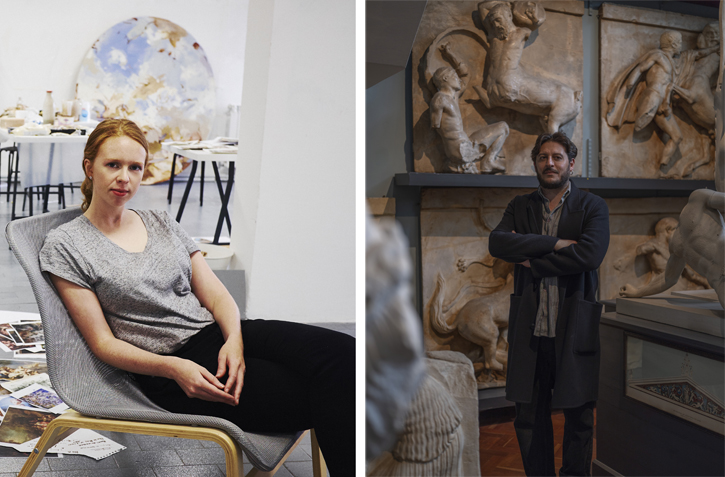
Voluptuous configurations reminiscent of fruits or beans, fleshy flower fragments in creamy paint, frothing waves of pink, rose, lilac and green – Flora Yukhnovich's large-sized paintings evoke a sense of uncompromising form and colour.
Hell is a Teenage Girl
2023, oil on linen by Flora Yukhnovich (b.1990) 
Circular shapes and soft contours suggest organic growth, while glowing light and dark contrasts create an illusion of three-dimensional depth. Thick oil paint is combined with thinned-down lucid colour, covering the canvases in engulfing compositions. Fantastical worlds originate from carefully rendered shapes suggestive of plants and corporeal elements. These are complemented by loose marks and dynamic brush strokes that convey a powerful rhythm and draw attention to the artistic materials and the process of painting.
Flora Yukhnovich in the Ashmolean Museum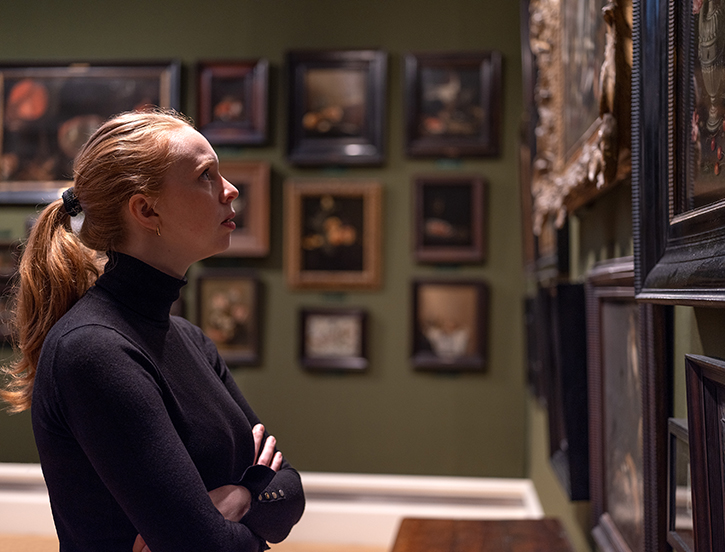
Flora Yukhnovich (b.1990 in Norwich) studied portraiture at The Heatherley School of Fine Art in London, before developing her characteristic painting language at City & Guilds of London Art School, where she completed her MA in 2017. Inspired by art historical movements ranging from Rococo to Abstract Expressionism, as well as contemporary imagery in film or social media, her work focuses on forms, colours and gestures, turning figurative inspirations into abstracted paintings. Gestural, lush and often large, Yukhnovich's paintings link the figurative and abstract, beautiful and abject, high art and popular culture. Traditional notions of femininity are referenced playfully and critically.
At the Ashmolean, Yukhnovich found herself drawn to the Daisy Linda Ward collection of still life paintings, which entered the Museum as a private bequest in 1939. It comprises 94 Dutch and Flemish oil paintings from the seventeenth and early eighteenth centuries, including masterworks by artists such as Ambrosius Bosschaert, Clara Peeters, Rachel Ruysch and Adriaen van Utrecht. Displayed in a tight salon-style hang, Yukhnovich could not help but take notice of the flower paintings.
The historic paintings linked with her own collaging approach. The featured plants flower at different times: the painter made studies of plants in season and then put them together in one composition. Similarly, Yukhnovich's practice is based on combining different motifs, creating a 'bouquet' of visual inspirations from different times and contexts and always trying to find lines through history. Most importantly, however, Yukhnovich was interested in the relationship of flower paintings with gender.
Flowers became an independent subject in painting in the seventeenth century. Women, restricted in the fields of art and science due to countless social and economic obstacles, featured relatively prominently among practitioners of still life painting. Studying flowers was considered an elegant feminine activity.
Rachel Ruysch (1664–1750) became one of the most accomplished, productive and commercially successful flower painters of the Dutch Golden Age. Her A 'Forest Floor' Still Life of Flowers presents a cluster of intricately painted flowers in glowing red, orange and white tones, contrasting against a dark forest background. The blooms, leaves and stems, as well as grass and mushrooms, are arranged in a skilful composition that is highly convincing in its control of colour tones and space.
I Might Have Known it Would Be Red
2022, oil on linen by Flora Yukhnovich (b.1990) 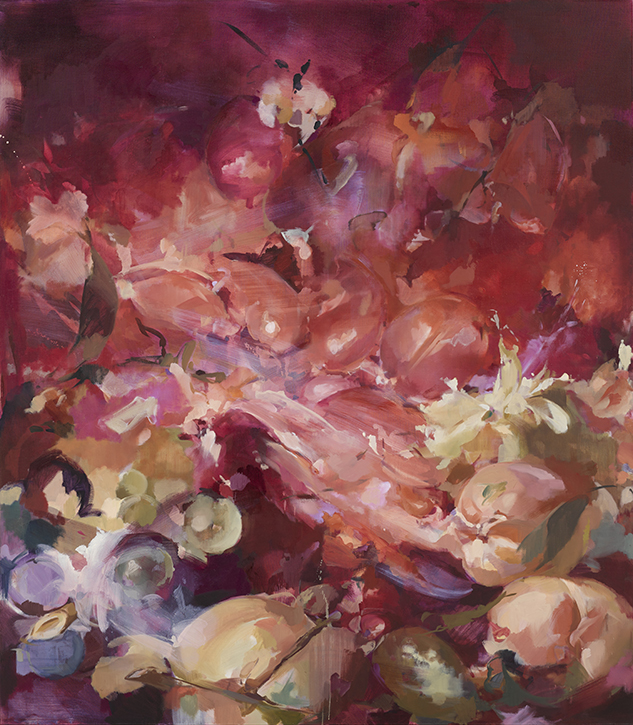
Carefully painted organic shapes, light and shadow effects, dynamic lines and radiant colours in works like I Might Have Known It Would be Red show that Yukhnovich embraced the artisanal qualities of such still lifes and their ideas of beautiful femininity. At the same time, however, she was fascinated with the dark side of still lifes, reminiscent of transience and death.
Teeth
2023, oil on linen by Flora Yukhnovich (b.1990) 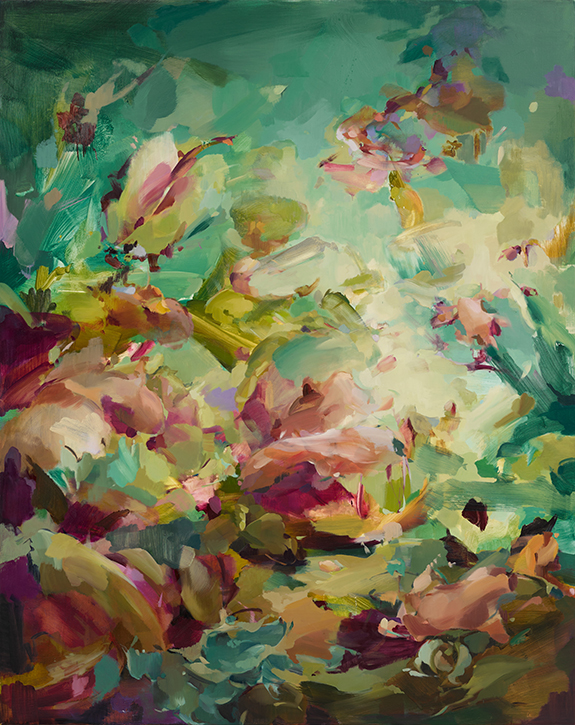
For a painting titled Teeth, Yukhnovich looked at the carnivorous Venus flytrap, which catches prey with a seductive trapping structure and hairs. When the plant was discovered in the eighteenth century, the shape of this trap was seen to resemble a vagina dentata (toothed vagina). 'I was trying to get a toxic, synthetic sensibility and a kind of humorous snappiness,' the artist describes this painting.
She Herself is a Haunted House
2023, oil on linen by Flora Yukhnovich (b.1990) 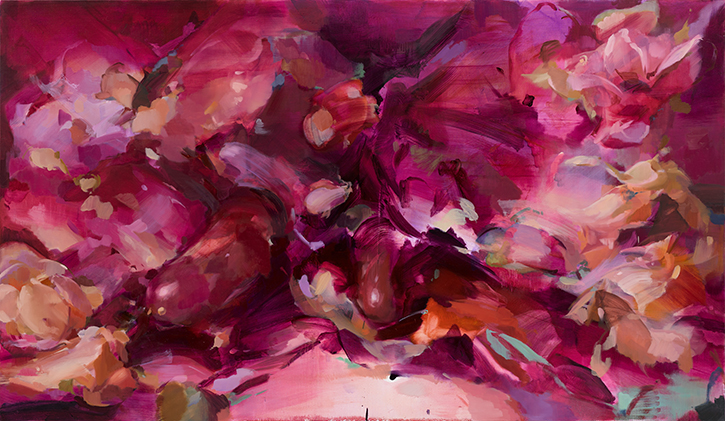
Bursting compositions, energetic brush strokes, and strong colour combinations in works like She Herself is a Haunted House are evocative of the untamed and loud. Femininity in Yukhnovich's works is confident and strong, suggesting a sense of Dionysian excess and fierce appetite. It is therefore not surprising that Yukhnovich also looked at horror films as inspiration for her paintings, referencing them in the titles of her works.
Horror films often contrast the cliché of virtuous and innocent femininity with unbounded, 'monstrous' femininity. In the films that Yukhnovich watched, including Carrie (1973), Raw (2016) and Teeth (2007), the notion of unstoppable femininity is visualised through aestheticised fluids, such as blood that dramatically absorbs the whole frame. Monstrous femininity in horror films tends to emphasise the feminine body as something that is impure or polluted, and that refuses to conform to boundaries surrounding the clean and proper. Yukhnovich's fleshy, visceral and all-engulfing painting imitates female gender dichotomies – such as pretty/monstrous, pure/obscene, young/old – to the point of absurdity.
Daniel Crews-Chubb in his studio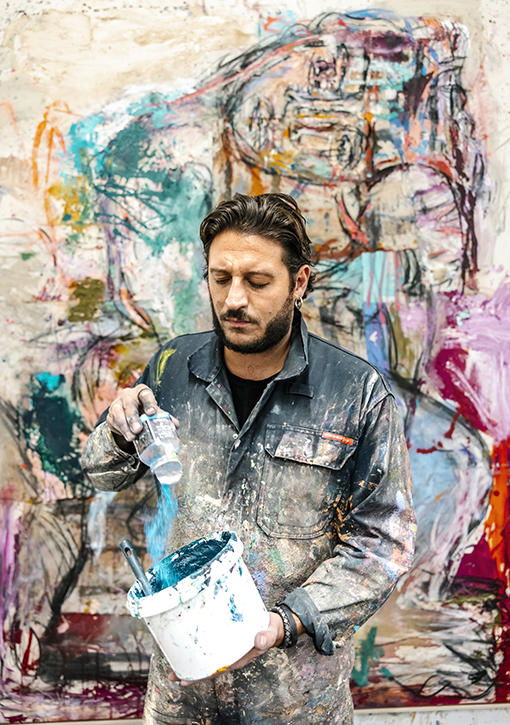
Daniel Crews-Chubb (b.1984 in Northampton) graduated from the Chelsea College of Arts in 2009, before studying at the Turps Art School, which offered a Painters Studio Programme. He has developed an intensely physical mixed-media painting style, for which paint is smeared with the fingers, scratched with a stick, glopped on straight from the tube, sprayed from a can and mixed into sand or pumice gel. The combination of this 'wild' and gestural use of materials with historical subject matter is a recurring characteristic of his work and results in unique, often large paintings.
Mould for a plaque with a bejewelled goddess or yakshi (nature spirit) with female attendant
c.200–1 BC, terracotta, east India (EA1993.35) 
At the Ashmolean, Crews-Chubb was particularly interested in international pre-historic sculptures that depict non-human and supernatural figures, such as gods, goddesses, humanoids and mythical creatures. Drawn to deities that evoke a sense of the imposing, surreal and monstrous, the mixed media paintings of his new Immortals and Masks series feature his fantastical creations. The androgynous or genderless figures have their own identity, and the artist views them as 'not too dissimilar to Frankenstein's monsters'.
Mask V (light teal)
2023, oil, oil bar, acrylic, ink, charcoal, spray paint, sand & collaged fabrics on canvas by Daniel Crews-Chubb (b.1984) 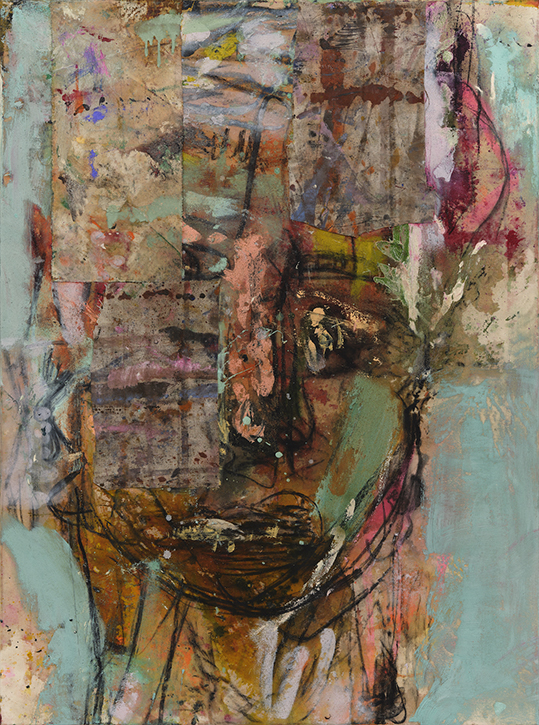
Crews-Chubb experimented with their postures and expressions, describing his approach: 'I tend to look at ancient art and artefacts because there is a particular energy to it. I can be attracted to an object for many reasons. It can be a stance, a decorative headdress or even simply the way it has eroded over time – the loss of a limb, or patina caused by ageing'.
Sumerian statue of a male worshipper originally placed in a temple as a dedication to the gods
2600–2350 BC, limestone, Mesopotamia (AN1919.65) 
Cross-cultural associations remove the Immortals figures from direct references, creating a contemporary response to practices of vastly different times and places. The title of Crews-Chubb's series also refers to the fact that throughout history humans have always 'immortalised' themselves, by building monuments or creating works of art.
Immortal II (turquoise) / Immortal III (red, green and pink)
2002 / 2023, oil, oil bar, acrylic, ink, charcoal, spray paint, sand, coarse pumice gel & collaged fabrics on canvas by Daniel Crews-Chubb (b.1984) 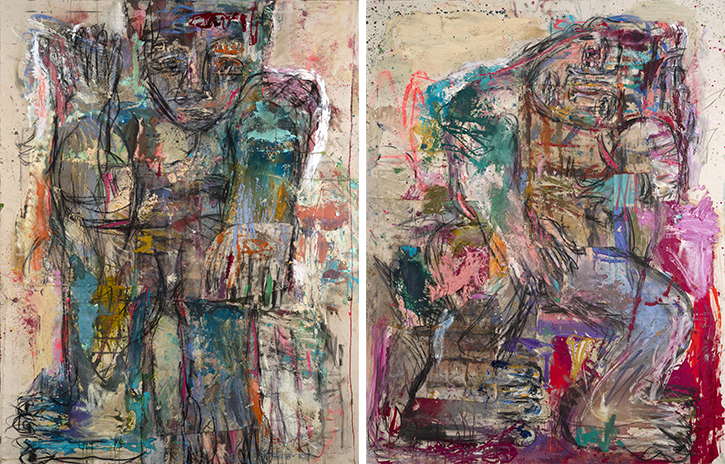
The larger-than-life-size figures in Immoral II (turquoise) and Immortal III (red, green and pink) have a strong presence in the gallery, while also suggesting a self-contained and thoughtful expression. Despite being informed by deities and fantastical figures from ancient history, Crews-Chubb's work is nonetheless concerned deeply with the human condition today: 'I'm trying to make something that I think is powerful, outward looking, which makes you ask what it is to be human,'.
3 Immortals (ultramarine blue)
2023, oil, oil bar, acrylic, ink, charcoal, spray paint, sand, coarse pumice gel & collaged fabrics on canvas by Daniel Crews-Chubb (b.1984) 
Yukhnovich's and Crews-Chubb's paintings in the 'Ashmolean NOW' exhibition have activated the Museum's historic works, presenting fresh perspectives on still life paintings and ancient sculptures. Both artists' works convey their love for the medium of paint and the creative process of painting. Celebrating colours, forms and brushstrokes, the paintings convince through a timeless, dynamic language. Removed from their initial inspirations, they are unique works that oscillate powerfully between figurative and abstract, conceptual and playful.
Dr Lena Fritsch, Curator of Modern and Contemporary Art at the Ashmolean Museum of Art and Archaeology
'Ashmolean NOW' is on view in Gallery 8 at Ashmolean Museum Oxford from 8th July 2023 until 14th January 2024. Admission is free



